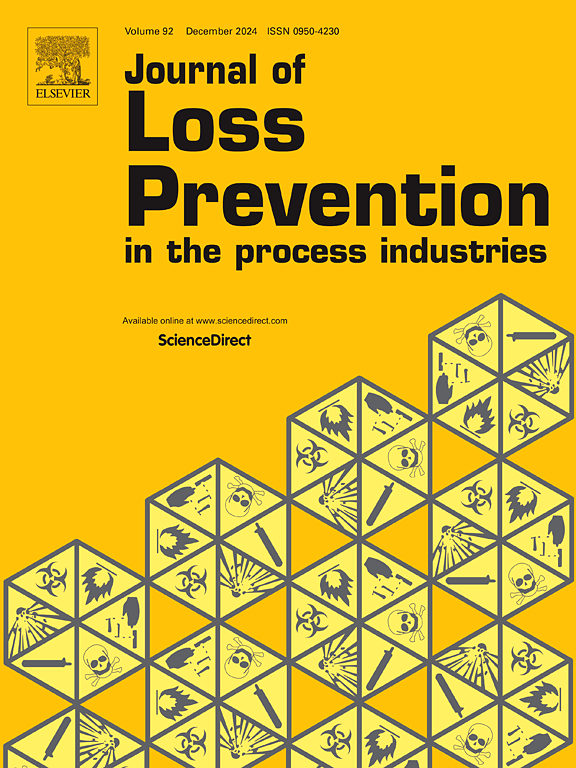Convergence of safety and security within process plants
IF 3.6
3区 工程技术
Q2 ENGINEERING, CHEMICAL
Journal of Loss Prevention in The Process Industries
Pub Date : 2025-02-05
DOI:10.1016/j.jlp.2025.105579
引用次数: 0
Abstract
Process plants safety is currently an integral part of process industries. This fact is evidenced by a number of important directives, standards, and regulations, such as the Seveso III Directive, Process Safety Management Standard or Occupational Health and Safety Management Systems. By implementing them, personnel safety, process safety, functional safety, etc. are constantly ensured. However, on the other hand, it is necessary to point out that process plants can be a significant source of risk not only from a process point of view, but also as a result of intentional or unintentional external damage. In this context, it is also necessary to pay attention to process plants security. Currently, only a few directives related to the critical infrastructure protection or cyber security pay attention to this area. Based on these facts, the aim of the article is to present possibilities, tools and benefits of the convergence of process plants safety with the physical protection system and organizational resilience. As part of the physical protection system, convergence mechanical barriers, alarm systems, security forces and regime measures can be used for this purpose at the operational level. In contrast, organizational resilience processes can be used to strengthen process plants safety at the management level. In both cases, these security measures can be used in all three-time phases of the accident, i.e. before the accident, during the accident, and after the accident.
过程工厂内安全与安保的融合
目前,加工工厂的安全是加工工业不可分割的一部分。许多重要的指令、标准和法规都证明了这一事实,例如Seveso III指令、过程安全管理标准或职业健康与安全管理体系。通过实施,不断确保人身安全、过程安全、功能安全等。然而,另一方面,有必要指出,加工工厂不仅从工艺的角度来看,而且作为有意或无意的外部损害的结果,可能是一个重要的风险来源。在此背景下,也有必要关注工艺装置的安全性。目前,只有少数与关键基础设施保护或网络安全相关的指令关注这一领域。基于这些事实,本文的目的是展示过程工厂安全与物理保护系统和组织弹性融合的可能性、工具和好处。作为实物保护系统的一部分,汇合机械屏障、警报系统、保安部队和制度措施可在行动一级为此目的而使用。相反,组织弹性过程可用于在管理层面加强过程工厂的安全性。在这两种情况下,这些安全措施都可以在事故的所有三个时间阶段使用,即事故发生前、事故发生期间和事故发生后。
本文章由计算机程序翻译,如有差异,请以英文原文为准。
求助全文
约1分钟内获得全文
求助全文
来源期刊
CiteScore
7.20
自引率
14.30%
发文量
226
审稿时长
52 days
期刊介绍:
The broad scope of the journal is process safety. Process safety is defined as the prevention and mitigation of process-related injuries and damage arising from process incidents involving fire, explosion and toxic release. Such undesired events occur in the process industries during the use, storage, manufacture, handling, and transportation of highly hazardous chemicals.

 求助内容:
求助内容: 应助结果提醒方式:
应助结果提醒方式:


